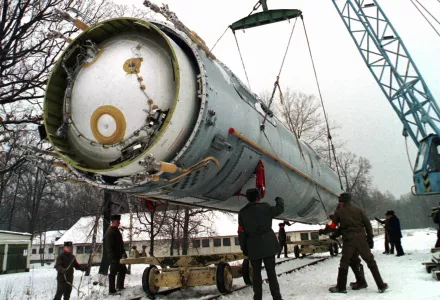
One of the lingering legacies of the Cold War was the enormous nuclear arsenals amassed by the two superpowers. When one of them, the Soviet Union, disintegrated in 1991, its nearly 30,000 nuclear weapons were located on the territory of not one but four newly sovereign states: Belarus, Kazakhstan, the Russian Federation, and Ukraine. Although command-and-control of Soviet strategic missiles was centralized in Moscow, the specter of the single largest wave of horizontal nuclear proliferation loomed after 1991. By 1994, however, Belarus, Kazakhstan, and Ukraine had decided to join the Nuclear Non-Proliferation Treaty (NPT) as non-nuclear weapons states and to give up the missiles on their soil. Drawing on previously untapped archival records, this article reconstructs the divergent paths of Belarus, Kazakhstan, and Ukraine toward relinquishing their armaments. A combination of domestic and international political factors contributed to the resolution of the problem. Among the various contributing factors, the NPT stands out as a salient force that provided normative framing and guided deliberations on post-Soviet nuclear disarmament.
Budjeryn, Mariana. “Non-Proliferation and State Succession: The Demise of the USSR and the Nuclear Aftermath in Belarus, Kazakhstan, and Ukraine.” Journal of Cold War Studies, Spring 2022
The full text of this publication is available via Journal of Cold War Studies.




